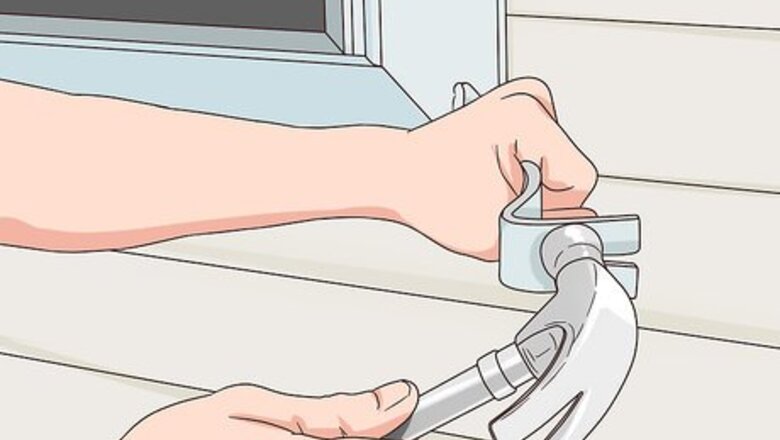
views
Removing Old Trim and Waterproofing the Window
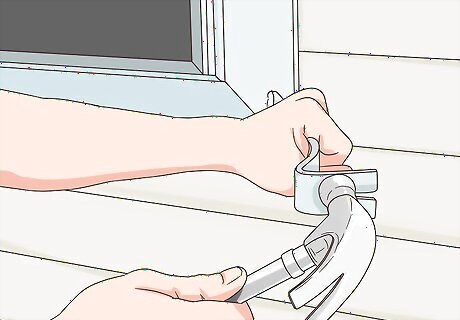
Pry off the old trim with a pry bar. To avoid damaging the wall, hold a wood block against it. Rest the back of the pry bar on the wood block. Slide the front end of the pry bar between the trim and the building, then pry off the pieces of trim and underlying trim boards.

Use expanding foam to fill in wall gaps. On older houses, you may notice a gap around the window where the trim was. Put on a pair of gloves to cover your hands, then spray a thin layer of expanding foam into the gap. Let it expand and harden for about 20 minutes before continuing.
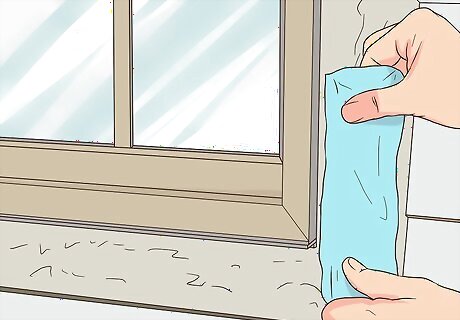
Apply flashing over the exposed wall if it isn’t already there. Get a roll of adhesive-backed window flashing from the home improvement store. Cut the flashing to size, then peel off the backing to stick the flashing in place. Start with the top and bottom edges, wedging them under the building's boards and window siding as much as possible. The flashing makes the trim and window more waterproof.
Cutting the New Trim
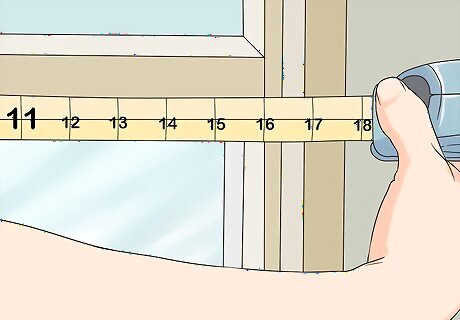
Measure the dimensions of the window. Go around the window with a tape measure to figure out what length of trim you need. Use the old trim as a guide if you still have it on hand. Mark your measurements on the trim pieces with a pencil.

Put on safety glasses and a dust mask before cutting the trim. Wear polycarbonate safety glasses or a facemask to protect your eyes. Cutting the trim creates dust, so put on a mask or respirator to avoid breathing it in. Wear earplugs or earmuffs to protect your hearing. Avoid wearing loose clothing when using a saw.
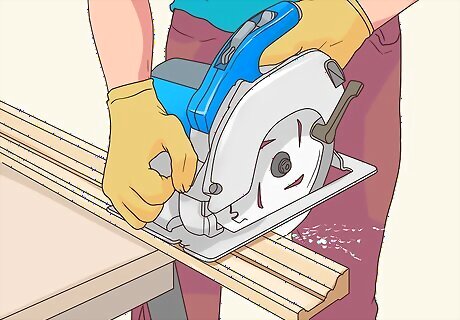
Cut the trim to size with a circular saw. Carbide-tipped saw blades will give you a smooth cut. Use the circular saw to cut off the excess ends of the trim. Make straight cuts so the trim pieces can lay flush against one another. Remember that it’s better to keep the trim longer rather than shorter. You can adjust it as needed later. To make the trim more decorative, you can cut the trim at a 45° with a miter saw.
Installing the New Trim
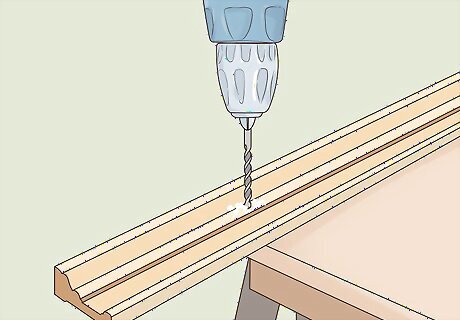
Pre-drill nail holes in the trim. Drill the holes through the outside surface of the trim. Drill a single hole at both ends of the trim. You’ll need to space out 2 more holes between them. Measure along the length of the trim so all the holes are an equal distance apart. For example, if the trim is 16 in (41 cm) long, drill the holes every 4 in (10 cm). Pay close attention to the way you install the trim to make sure it isn't backwards or upside-down.
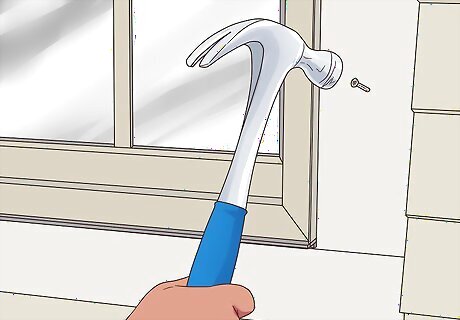
Nail the trim to the wall. Get enough 2.5 in (6.4 cm) nails for all the holes in the trim. Start by placing the top piece of trim on the wall. Make sure it’s level before nailing it in place. Then fit the side and bottom trim pieces as close together as possible before fastening them to the wall. If you’re working with PVC trim instead of wood, use steel trim-head screws instead.

Apply caulk around the trim. Squeeze a bead of caulk between the trim and the building’s siding. Spread the caulk all the way around the trim. Do the same thing between the trim and the window’s edge. Finish by smoothing the caulk with a moistened cloth or finger.
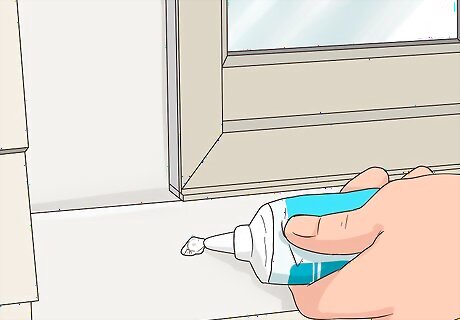
Fill the nail holes with painter’s putty. Push putty or a paintable caulk into the holes. Use a putty knife to smooth the filler material and scrape off any excess. You’ll then need to wait for it to dry. If it still doesn’t look level, sand down the excess filler with 120-grit sandpaper. Check the label on the putty or caulk to figure out how long it takes to dry.
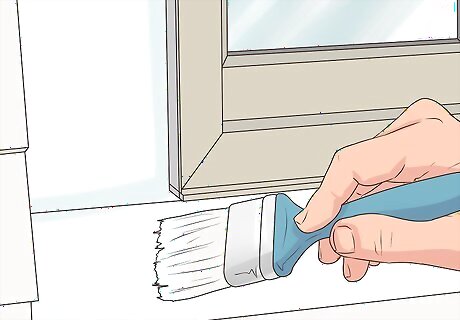
Prime and paint the trim as needed. If you’re painting wood, brush on a coat of primer and let it dry overnight first. Paint the trim, including the filler in the nail holes, with small, even brush strokes. You can also color wood with a wood stainer instead of paint. If you’re painting or staining wood, it’s recommended that you apply a wood sealant after painting to protect the trim from water damage. Cover bushes and grass with a tarp to protect them from damage. Wipe up any dripping paint immediately so it doesn’t have a chance to dry.


















Comments
0 comment